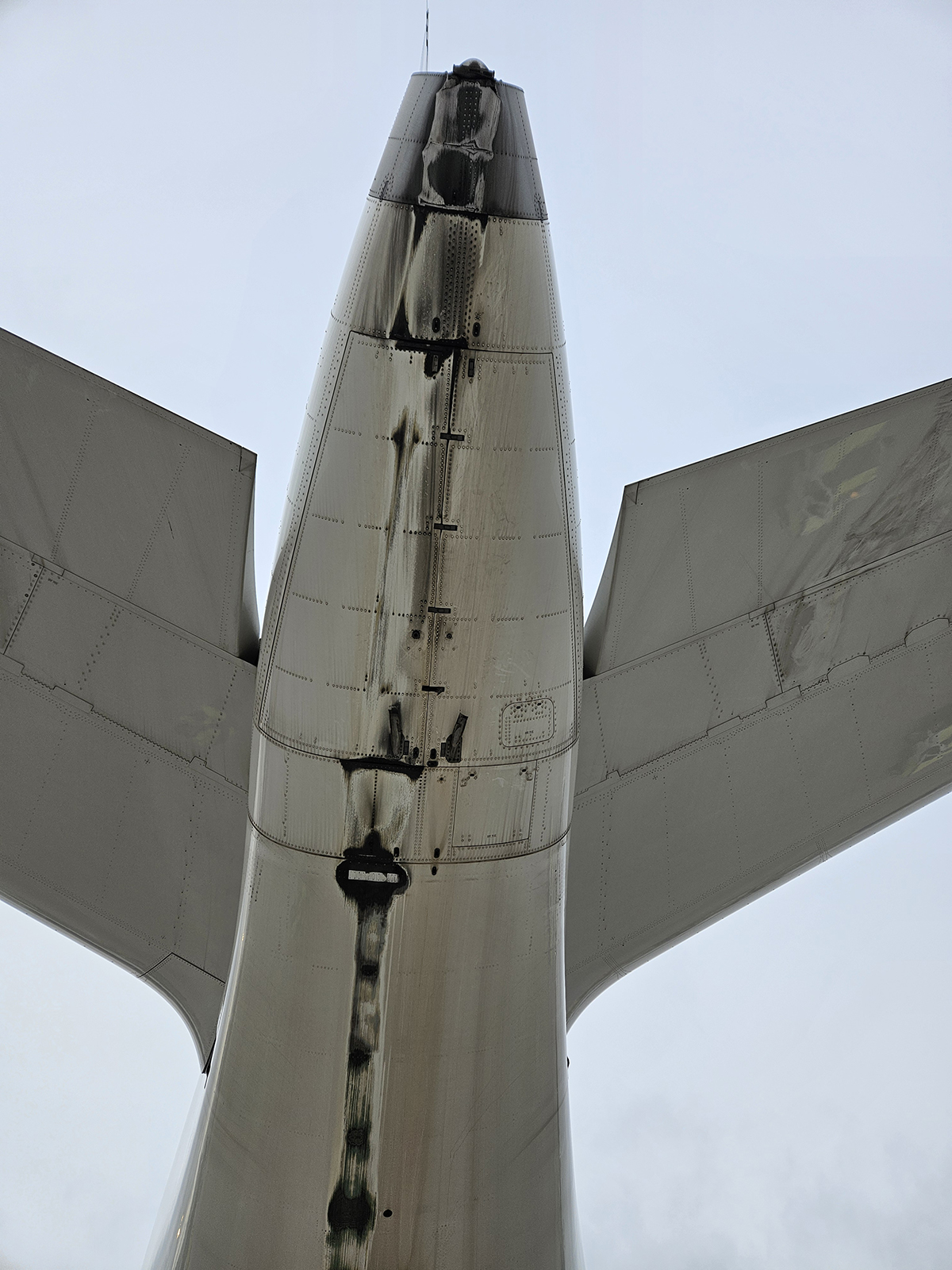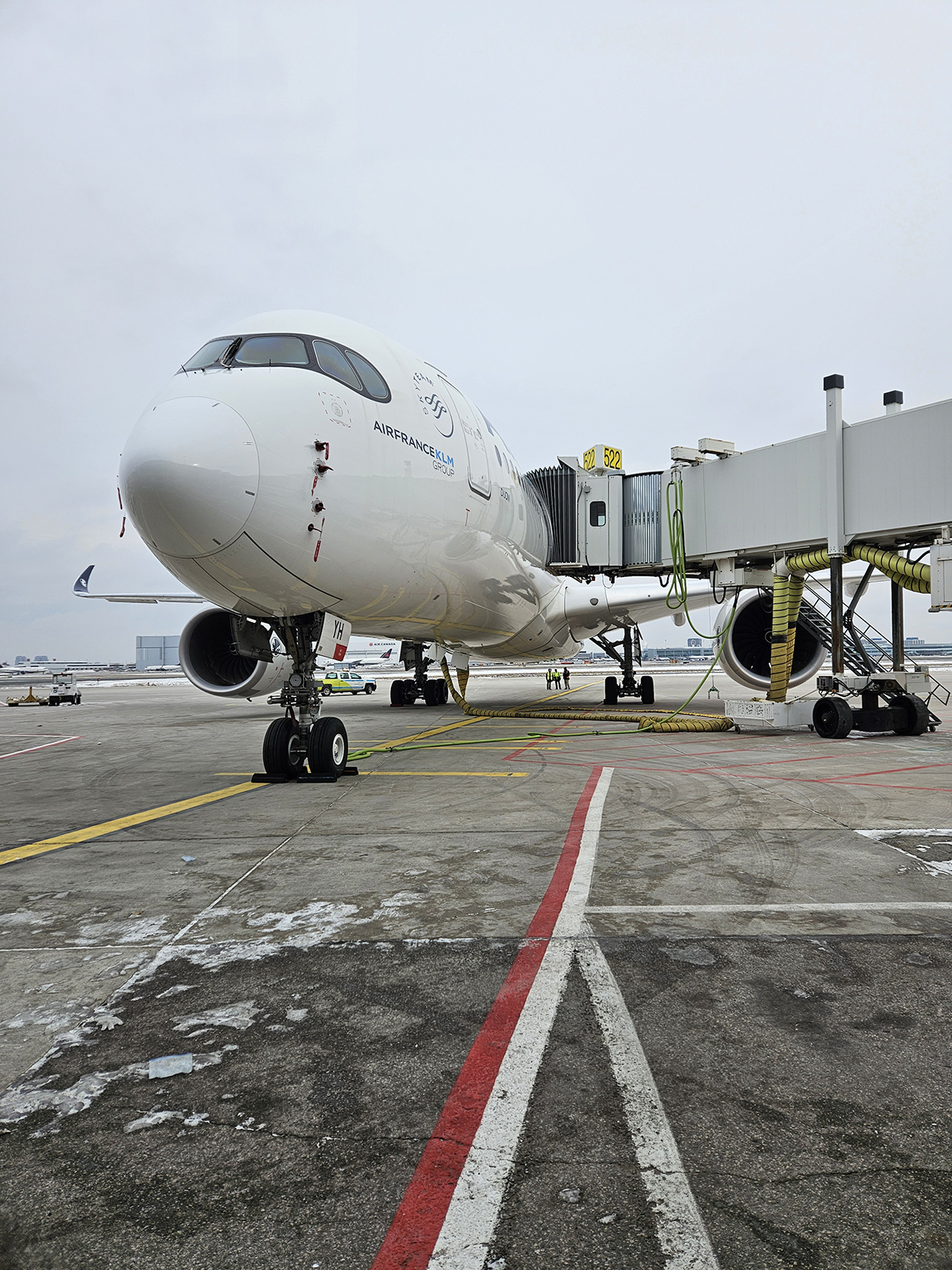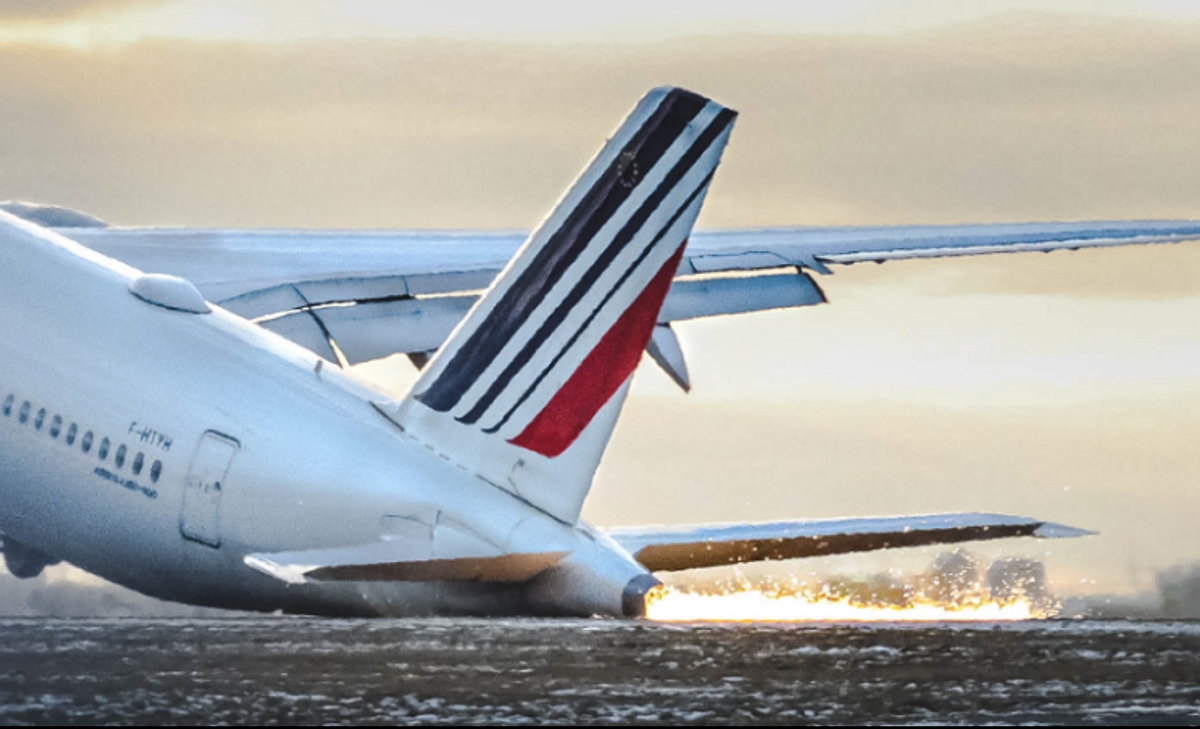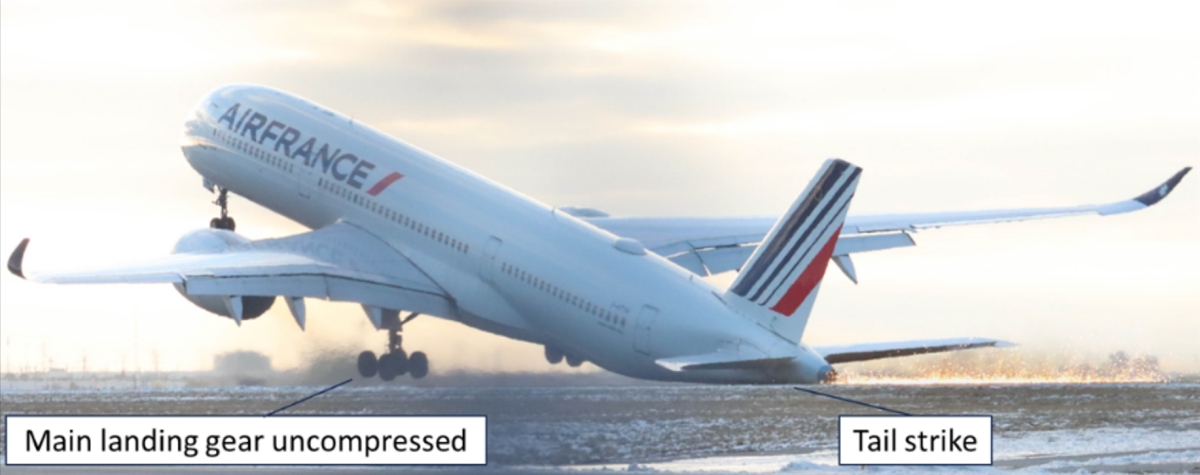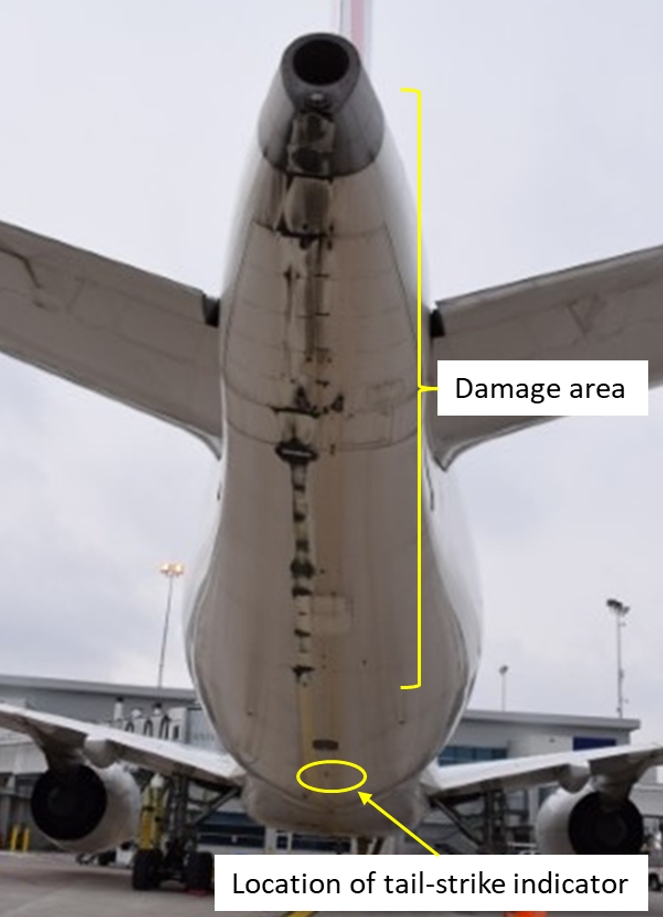Table of contents
Tail strike on go-around
Air France
Airbus A350-900, F-HTYH
Toronto/Lester B. Pearson International Airport (CYYZ), Ontario
The occurrence
On 21 January 2024, the Air France Airbus A350-900 aircraft (registration F-HTYH, serial number 0488) was operating as flight AFR 356 from Paris Charles de Gaulle Airport (LFPG), France, to Toronto/Lester B. Pearson International airport (CYYZ), Ontario, with 2 flight crew members, 10 cabin crew members, and 304 passengers on board. The flight was a training flight for the first officer. He was the pilot flying and occupied the right seat. The captain was the pilot monitoring and occupied the left seat.
During the landing on Runway 24L, the pilot monitoring called for a go-around as the aircraft main landing gear touched down, and the pilot flying started to set the thrust reversers to reverse idle. Within seconds, the go-around command was repeated. The pilot flying complied with the command and pushed the thrust levers to the take-off/go-around detent. The aircraft became airborne at low speed and the aircraft’s pitch was increased while both pilots concentrated on conducting the go-around. At 1634 Eastern Standard Time, a tail strike occurred. The flight crew were unaware of the tail strike, proceeded with the go-around, and completed a second approach to the same runway without further incident. There were no injuries. There was structural damage to lower aft section of the fuselage and tail cone area. The TSB investigation is ongoing.
Update: 16 January 2025
The following update contains facts that the TSB has been able to validate at this time. It contains no conclusions about the factors that contributed to the occurrence. The final investigation report will include an analysis of all relevant factors and provide the Board’s findings. The TSB was assisted by subject matter experts from Air France and Airbus.
What we know
The aircraft’s flight data recorder (FDR) and cockpit voice recorder (CVR) were successfully downloaded. Damage was identified in the fuselage and tail section, specifically aft of the tail-strike indicator between frames FR 92 and FR 102. The damage included skin delamination, punctures, damaged fasteners, an eroded flange, and a severely damaged tail cone with deformed skin and cracked frames.
Repairs were conducted at CYYZ until 10 June 2024. The aircraft was then flown to LFPG and later to a maintenance facility in Toulouse, France. It was returned to service in October 2024. The investigation will focus on the flight crew’s decisions and actions, operational guidance, tail-strike protection systems, and post-occurrence dual control inputs and communications.
Safety action taken by stakeholders as of 16 January 2025
Airbus amended the A350 Flight Crew Training Manual (FCTM) and proposed recurrent training dedicated to conducting a go-around near the ground. It also modified the cockpit warnings and alerts to inhibit warnings if a go-around is initiated near the ground with transient ground contact, while keeping this alert available for touch-and-go manoeuvres.
Air France incorporated balked-landing exercises during line-oriented and recurrent training for all A330 and A350 pilots and, as time permitted, for A320 pilots in remedial training. It also incorporated balked-landing exercises for B777 and B787 pilots during their line-oriented training and for A220 and A320 pilots undergoing recurrent training. In addition, Air France created a video demonstrating a balked landing on the A350 aircraft for annual e-learning training and published a company note for the A330 and A350 fleet regarding the procedure to follow when conducting a go-around near the ground. The company note provides guidance on arrival briefings, pitch and speed control, and changes that were made to the Airbus A350 FCTM.
Next steps
The investigation is in the report phase.
Investigation information
Download high-resolution photos from the TSB Flickr page.
Class of investigation
This is a class 3 investigation. These investigations analyze a small number of safety issues, and may result in recommendations. Class 3 investigations are generally completed within 450 days. For more information, see the Policy on Occurrence Classification.
TSB investigation process
There are 3 phases to a TSB investigation
- Field phase: a team of investigators examines the occurrence site and wreckage, interviews witnesses and collects pertinent information.
- Examination and analysis phase: the TSB reviews pertinent records, tests components of the wreckage in the lab, determines the sequence of events and identifies safety deficiencies. When safety deficiencies are suspected or confirmed, the TSB advises the appropriate authority without waiting until publication of the final report.
- Report phase: a confidential draft report is approved by the Board and sent to persons and corporations who are directly concerned by the report. They then have the opportunity to dispute or correct information they believe to be incorrect. The Board considers all representations before approving the final report, which is subsequently released to the public.
For more information, see our Investigation process page.
The TSB is an independent agency that investigates air, marine, pipeline, and rail transportation occurrences. Its sole aim is the advancement of transportation safety. It is not the function of the Board to assign fault or determine civil or criminal liability.

